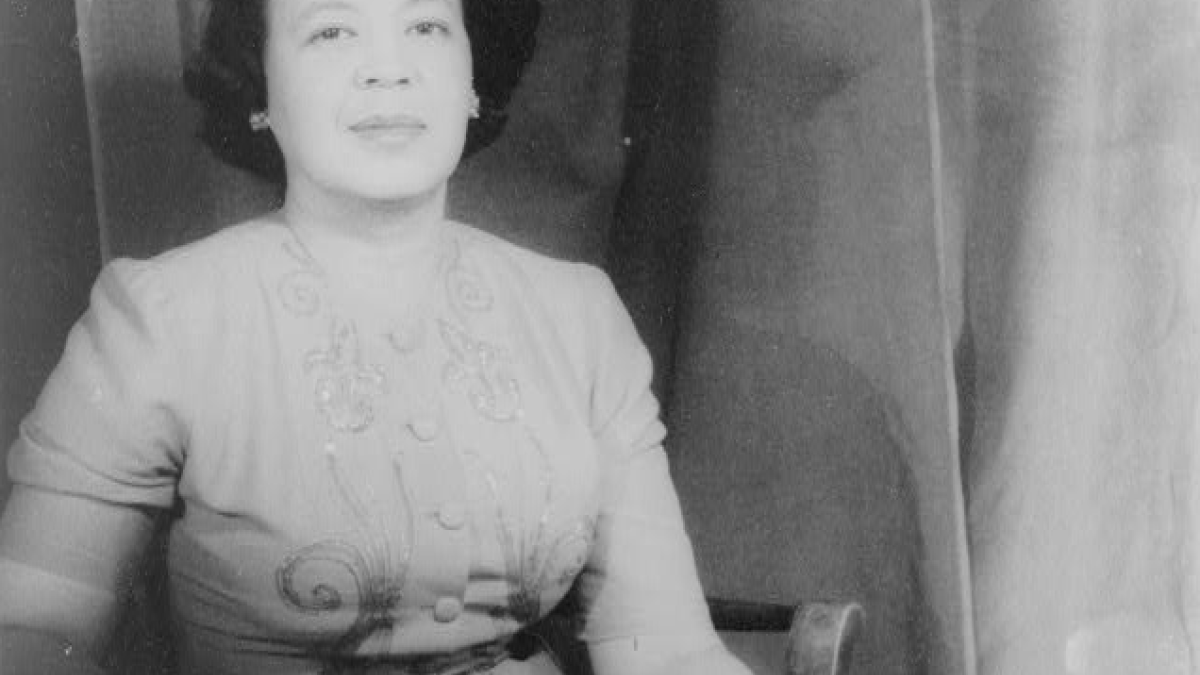Introducing the Black Women Composers Project

Library of Congress portrait of Margaret Bonds in 1956. Photo by Carl Van Vechten
Last fall, the Music Library at Arizona State University began working on a new research tool for students and faculty interested in exploring an area of study largely undiscovered — important Black female composers and their compositions, dating from the 1930s to present day.
Now online and poised for growth, the Black Women Composers Project points to the ASU Library’s growing collection of over 160 newly available scores, including symphonies, operas, choral works, vocal music and chamber music, and features biographies, compositions and sound recordings belonging to 15 significant composers in the 20th and 21st centuries.
“The Black Women Composers Project is illustrative of our strategic initiative to prioritize the preservation and digitization of resources that elevate the voices of communities that have been underrepresented in libraries and archives. Increasing access to these rare materials and diverse collections is a great way for the library to contribute to realizing ASU’s charter,” said Lorrie McAllister, associate university librarian of collections and analysis at the ASU Library.
To discuss some of the extraordinary women represented in the Black Women Composers Project, ASU News spoke to Christopher Mehrens, associate librarian, who is overseeing the project. While many of the new scores in the collection are still being processed, Mehrens says his hope for the project is that it will shine a light on this rich music history and make it accessible for all.
Question: Among the earliest represented composers in the project is Florence B. Price (1887-1953), the first African American woman to have a symphony premiered by a major symphony orchestra. Can you tell us more about her?
Answer: Price led a remarkable life. She was born in Little Rock, Arkansas, and initially studied music with her mother. Such was her talent, she was admitted to the New England Conservatory of Music in Boston, where she studied organ with Wallace Goodrich and composition with two of the foremost American composers and teachers of the period, Frederick Shepard Converse (1871-1940) and George Whitefield Chadwick (1854-1931). Upon graduation, she returned to the south to teach, eventually becoming head of the music department at Clark College in Atlanta.
According to Price scholar Rae Linda Brown, because of increasing racial oppression, she and her family moved to Chicago. It was in Chicago that she emerged as a significant American composer and educator. In 1932 she won the Wanamaker prize for her First Symphony, which was performed by the Chicago Symphony in 1933. It was this performance that made her the first Black woman composer to be performed by a major symphony orchestra. When the great contralto Marian Anderson performed Price’s setting of Langston Hughes’ poem “Song to the Dark Virgin,” her song was hailed by critics as being one of the greatest accomplishments by an American composer. Until her death, Price remained one of this country’s most important composers and teachers.
Q: Another early composer featured in the project is Margaret Bonds, the virtuoso concert pianist, who studied with Price and collaborated with Langston Hughes. Can you give us more of her history?
A: Margaret Bonds (1913-1972) was born in Los Angeles, California, was taught music from an early age by her mother and, as a teen, studied piano and composition with Florence B. Price. She attended Northwestern University, where she was awarded Bachelor of Music and Master of Music degrees before being admitted to the Juilliard School in New York City, where she studied piano and composition. In 1932, the same year that Florence B. Price won the Wanamaker prize for her symphony, Bonds won the Wanamaker for her song "Sea Ghost." As a virtuoso concert pianist, in 1933, she premiered Price’s piano concerto with the Chicago Symphony, becoming the first Black woman to solo with that renowned orchestra.
Bonds collaborated with the great poet Langston Hughes and set many of his poems to music. She returned to Los Angeles and remained active in the music community. Her last major composition, "Credo," based on the opening of W.E.B. Du Bois’ 1921 book “Darkwater: Voices from Within the Veil" was performed a month after her death by the Los Angeles Philharmonic.
Q: Who are some of the other important composers the project is spotlighting?
A: Valerie Capers, the first blind person to graduate from Juilliard, who was commissioned by the National Endowment for the Arts to compose an “operatorio” on the life of Sojourner Truth. Rachel Eubanks, who studied at the American Conservatory of Music in France with the legendary composer and teacher Nadia Boulanger (teacher of Aaron Copland). There is also Tania León, who was born in Cuba, studied at NYU and served as a pianist, conductor and composer at the Dance Theatre of Harlem. She was also involved as a music director in such Broadway productions as “The Wiz” and “Godspell.” And there’s Jessie Montgomery, who is the recipient of the Leonard Bernstein Award from the American Society of Composers, Authors, and Publishers (ASCAP) and is a major up-and-coming composer.
To learn more about the Black Women Composers Project, visit the library guide or contact Christopher Mehrens at christopher.mehrens@asu.edu.
More Arts, humanities and education

ASU professor, alum named Yamaha '40 Under 40' outstanding music educators
A music career conference that connects college students with such industry leaders as Timbaland. A K–12 program that…

ASU's Poitier Film School to host master classes, screening series with visionary filmmakers
Rodrigo Reyes, the acclaimed Mexican American filmmaker and Guggenheim Fellow whose 2022 documentary “Sansón and Me” won the Best…

Pen Project helps unlock writing talent for incarcerated writers
It’s a typical Monday afternoon and Lance Graham is on his way to the Arizona State Prison in Goodyear.It’s a familiar scene.…

